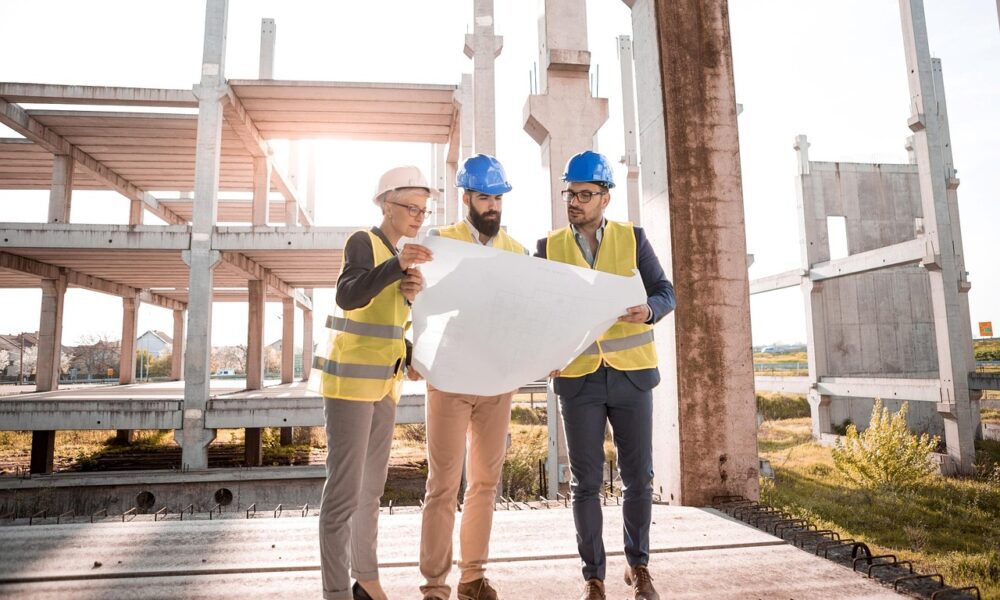The Ultimate Guide to Achieving a Spotless Space After a Construction Project

When the dust settles after a construction or renovation project, the true challenge begins — transforming the site from a chaotic work zone into a clean, polished, and livable environment. While construction work brings structures to life, it also leaves behind a significant mess that can’t be ignored. This is where the importance of a post construction clean becomes evident.
A construction project, whether residential or commercial, inevitably produces layers of dust, debris, and fine particles that settle on every surface imaginable. From drywall residue and paint splatters to nails, wood shavings, and adhesive marks, the cleanup phase is often far more complex than standard cleaning. For a property to truly shine and be safe for occupancy, a professional and systematic approach to cleaning after construction is essential.
Understanding What Post Construction Cleaning Entails
A post construction clean is not your typical sweeping and mopping job. It is a specialized cleaning process designed to tackle the unique challenges left behind after construction or remodeling work. The purpose of this cleaning phase is to remove all traces of construction dust, debris, and materials, creating a hygienic, safe, and aesthetically pleasing space.
The cleaning process is usually divided into multiple stages to ensure no corner is overlooked. Each phase addresses specific cleaning tasks, gradually transforming the site from rough condition to move-in ready.
The Different Phases of Post Construction Cleaning
1. Rough Cleaning Phase
This is the initial phase, typically carried out after major construction activities are complete but before final touches like flooring or painting are done. The focus during rough cleaning is on removing larger debris, leftover materials, and dust accumulation. Workers often collect scrap wood, wires, packaging, and other discarded materials. Sweeping, vacuuming, and surface wiping are done to prepare the site for the next stage of finishing work.
2. Light or Detailed Cleaning Phase
The second stage is far more detailed. This is where cleaners meticulously remove fine dust, stains, and residues left from construction. Walls are washed down to eliminate smudges or adhesive marks, and floors are cleaned thoroughly to remove paint drips, grout haze, or plaster dust. Fixtures such as light fittings, switches, vents, and baseboards receive particular attention.
During this phase, professionals use specialized tools such as HEPA-filter vacuums to capture fine dust particles that standard vacuums can’t handle. The goal is to ensure the property is not only visually clean but also safe to breathe in.
3. Final or Touch-Up Cleaning Phase
Once all construction activities and inspections are complete, the final cleaning phase ensures that the space is fully ready for occupation. Any dust that may have resettled is wiped down, smudges are polished away, and every surface is double-checked. Windows are washed for streak-free clarity, floors are polished, and the property is inspected from top to bottom for perfection.
Why Professional Post Construction Cleaning Is Essential
Attempting to clean up a construction site without the proper tools or expertise can be overwhelming. The fine dust produced by construction activities is notoriously difficult to remove and can spread easily if not handled correctly. Professional cleaning teams have the experience, equipment, and methods needed to perform an efficient and thorough post construction clean.
1. Health and Safety
Construction dust can contain harmful particles like silica, wood dust, or chemical residues that pose health risks when inhaled. Professional cleaners use industrial-grade air filtration systems and protective gear to ensure that these hazards are removed safely.
2. Time Efficiency
A construction crew may leave behind a mess that takes days to clean manually. Trained cleaners work systematically, using equipment designed for heavy-duty cleaning, allowing the space to be ready for use much sooner.
3. High-Quality Results
A professional post construction clean doesn’t just make a space look tidy — it enhances the overall finish of the construction work. Clean, polished surfaces, streak-free windows, and spotless floors allow the craftsmanship of the project to stand out.
4. Proper Waste Disposal
Handling leftover materials such as nails, screws, adhesives, and paint cans requires adherence to safety and environmental regulations. Professional cleaners know how to dispose of or recycle these materials responsibly.
Key Areas Covered During a Post Construction Clean
A thorough post construction clean covers every inch of the property, both interior and exterior. While the cleaning plan may vary depending on the size and type of project, the following areas are typically included:
- Walls and Ceilings: Removing dust, smudges, and paint marks without damaging the surface.
- Windows and Frames: Cleaning glass, removing stickers or adhesive residue, and polishing frames.
- Floors and Carpets: Vacuuming, mopping, and polishing floors; removing cement or grout residue; deep-cleaning carpets.
- Cabinets and Drawers: Wiping down interiors and exteriors to remove dust and construction debris.
- Fixtures and Fittings: Cleaning light fixtures, switches, vents, and doorknobs.
- Bathrooms and Kitchens: Sanitizing sinks, countertops, faucets, and other surfaces to ensure hygiene.
- Outdoor Areas: Sweeping entrances, cleaning patios, and disposing of debris left outside.
Every element of the site — from air ducts to skirting boards — requires attention to ensure no residual dust remains.
Tools and Techniques Used in Post Construction Cleaning
The cleaning tools and methods used for this type of project go beyond traditional equipment. Industrial vacuums, microfiber cloths, non-abrasive scrubbers, and specialized cleaning agents are commonly used. HEPA vacuums are especially important for trapping microscopic dust particles that can linger in the air long after visible debris is gone.
For hard surfaces, neutral pH cleaners are preferred to avoid damaging finishes. On glass and stainless steel, streak-free products ensure that surfaces maintain their shine. Floors are often buffed or polished, especially if the construction involved laying new tiles or hardwood flooring.
Professional teams also employ dust control techniques, such as cleaning from top to bottom (ceilings first, then walls, then floors), which prevents dust from resettling on cleaned surfaces.
The Environmental Side of Cleaning After Construction
Modern cleaning standards emphasize eco-friendly practices. Sustainable post construction cleaning involves using biodegradable cleaning products, minimizing water waste, and ensuring proper disposal or recycling of materials. These practices not only protect the environment but also create a safer indoor atmosphere for future occupants.
Some companies also employ green-certified cleaning agents to ensure that no toxic chemicals remain in the air or on surfaces after cleaning. This is especially crucial in homes, hospitals, schools, and commercial spaces where people spend long hours.
How to Prepare for a Post Construction Clean
Before the cleaning crew arrives, a few steps can help ensure efficiency:
- Ensure all construction work is complete. No additional sanding, painting, or drilling should be taking place.
- Remove large debris. While cleaners handle heavy-duty cleaning, pre-removing bulky waste can speed up the process.
- Check ventilation systems. Ensure air ducts are accessible for cleaning.
- Protect new installations. Cover delicate fixtures or furnishings that may have been recently installed to prevent accidental damage.
Communication between the construction team, property owner, and cleaning service ensures the cleaning process runs smoothly and meets expectations.
What to Expect After a Professional Post Construction Clean
Once the cleaning process is complete, the difference is immediately noticeable. Surfaces gleam, air quality improves, and every area feels fresh and ready for occupancy. The site is free of dust and debris, and any lingering odors from paint or construction materials are significantly reduced.
Property owners often report that professional cleaning enhances the perceived value of the space, especially in commercial settings where first impressions matter. For residential projects, it means moving into a healthy, spotless home without the stress of dealing with post-construction mess.
Final Thoughts
A construction or renovation project isn’t truly complete until every trace of dust, debris, and residue has been removed. The transformation from a chaotic job site to a pristine, polished environment requires skill, experience, and attention to detail — all of which are provided through a comprehensive post construction clean.
Investing in professional cleaning after construction not only ensures safety and hygiene but also preserves the quality and appearance of the newly completed space. Whether for homes, offices, or large-scale developments, the difference a proper cleaning makes is undeniable.
From removing fine dust to polishing the final surface, every step contributes to delivering a space that is not just built — but beautifully finished and ready to be lived in.

Source: The Ultimate Guide to Achieving a Spotless Space After a Construction Project




